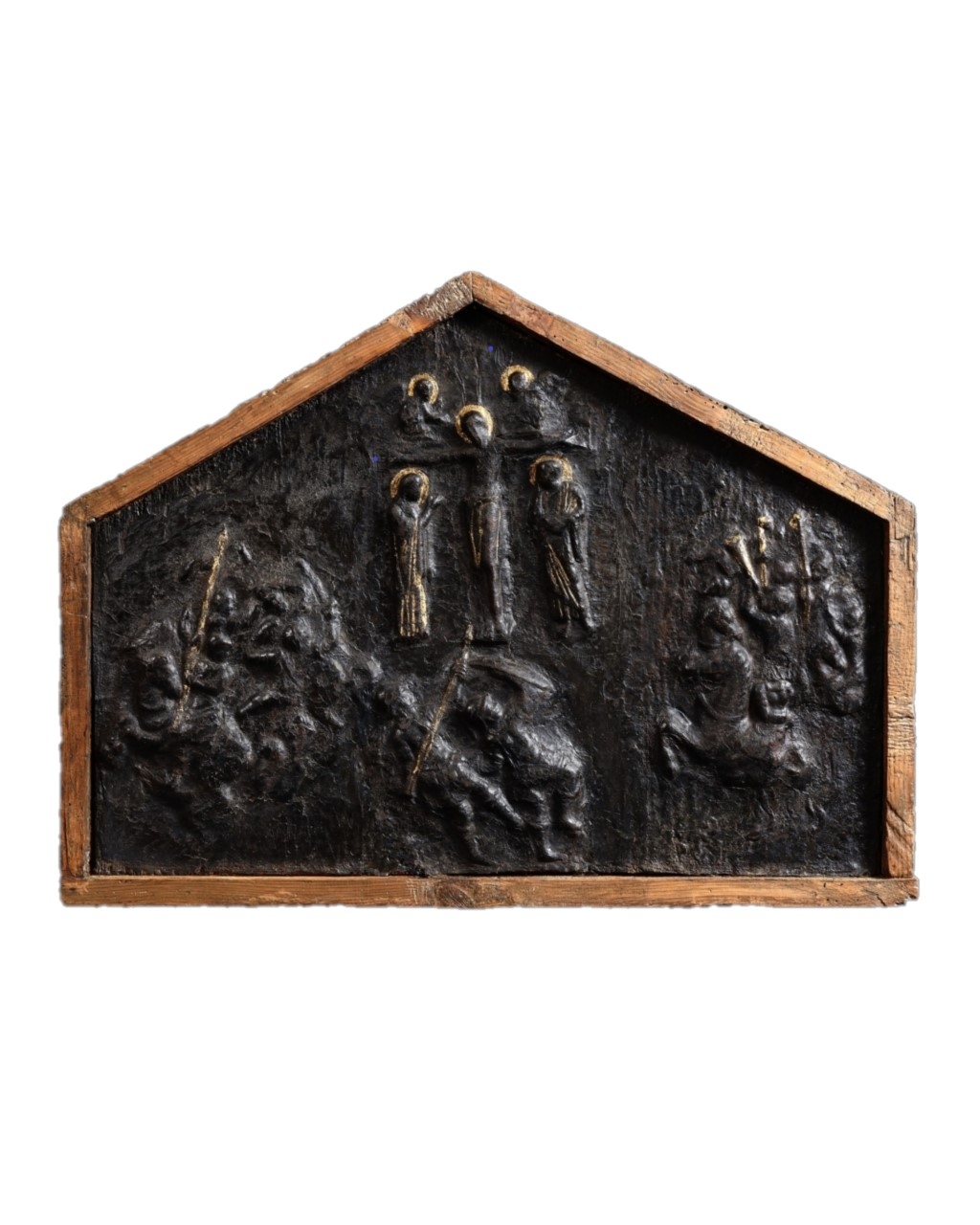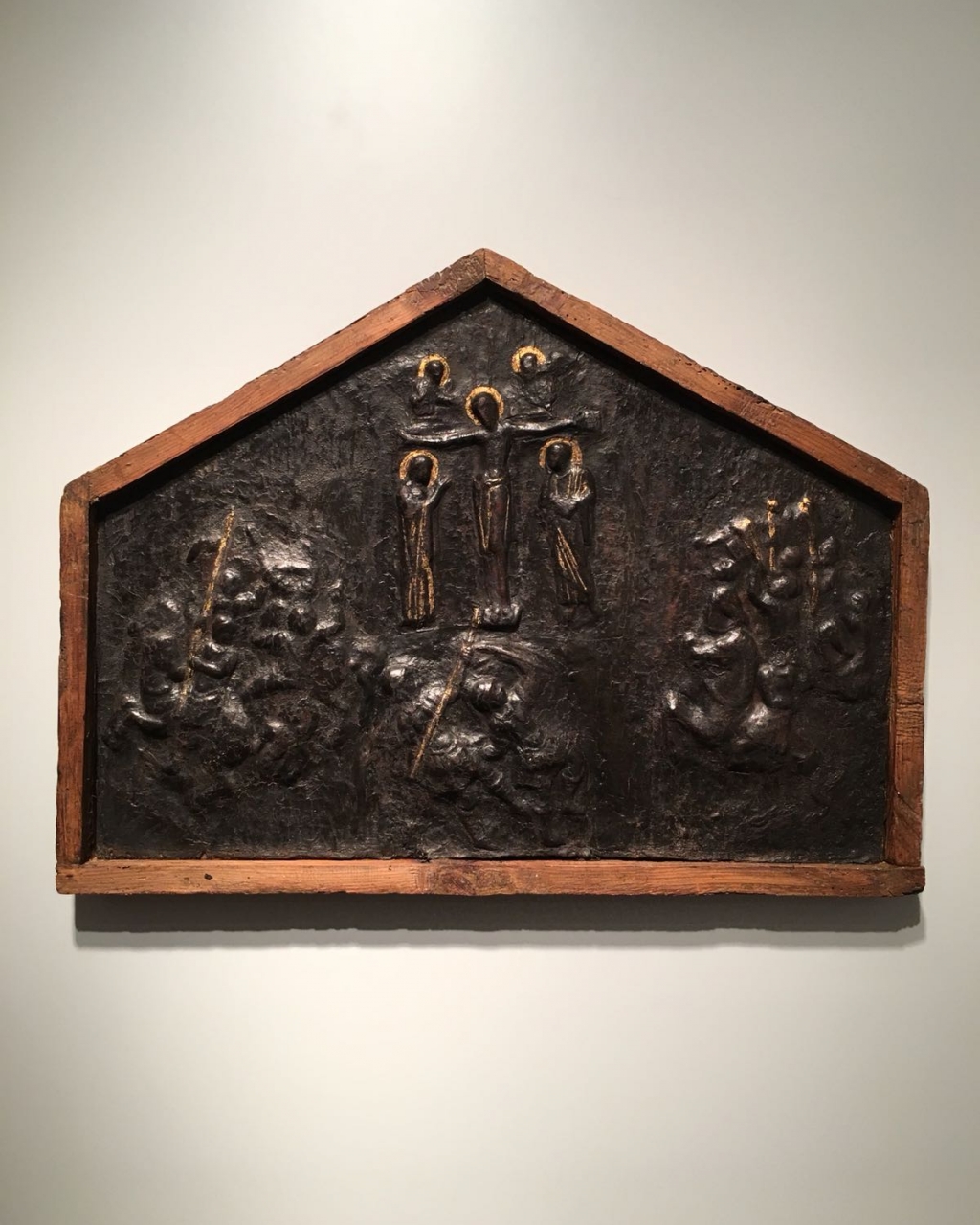
WORKS OF ART / WORKS OF ART / VENETIAN WORKSHOP
Venetian workshop
"Crucifixion", first half of the 16th century. Embossed leather with traces of gilding on a wood core, cm 51 x 37.5
Study by prof. Zuleika Murat. This unique type of altarpiece, in all likelihood intended for private devotion, is characterized by the coexistence of two distinct figurative genres. It was so conceived from its outset. As argued by Zuleika Murat, whose study provides specific comparisons with artworks produced in Venice, the solemn theme of the Crucifixion is derived from an eminent byzantine model which was certainly invented in Costantinople, likely by a workshop active for the imperial court between 1050 and 1190. This is testified by a gilded silver paten presently housed in the Museum of the Treasure of the Cathedral in Halberstadt. In fact, it features an identical Crucifixion, whose shape and dimension are totally compatible with those of the piece presented here. The provenance of the Halberstadt paten from Costantinople is documented, and it dated back to August 16, 1205. The soldiers featured in three groups all around the Calvary scene reveal instead a more modern vivacity. They might have been derived from engravings such as the Conversion of St Paul by Francesco Salviati (1545), an extremely popular piece which was reproduced in many exemplars and was also copied is paintings.
Comparative literature: Z. Murat, Leather Manufacturing and Circulating models in the Middle Ages: from a Byzantine Patena in Halberstadt to a Veneto-Cretan Icon in Ljubljana, “Zbornik za umetnostno zgodovino”, N.S., XLVII, 2011, pp. 75-97; Z. Murat 2016, A Masterpiece by a Venetian Atelier. A Leather Liturgical Dish, Longari Arte Milano.



